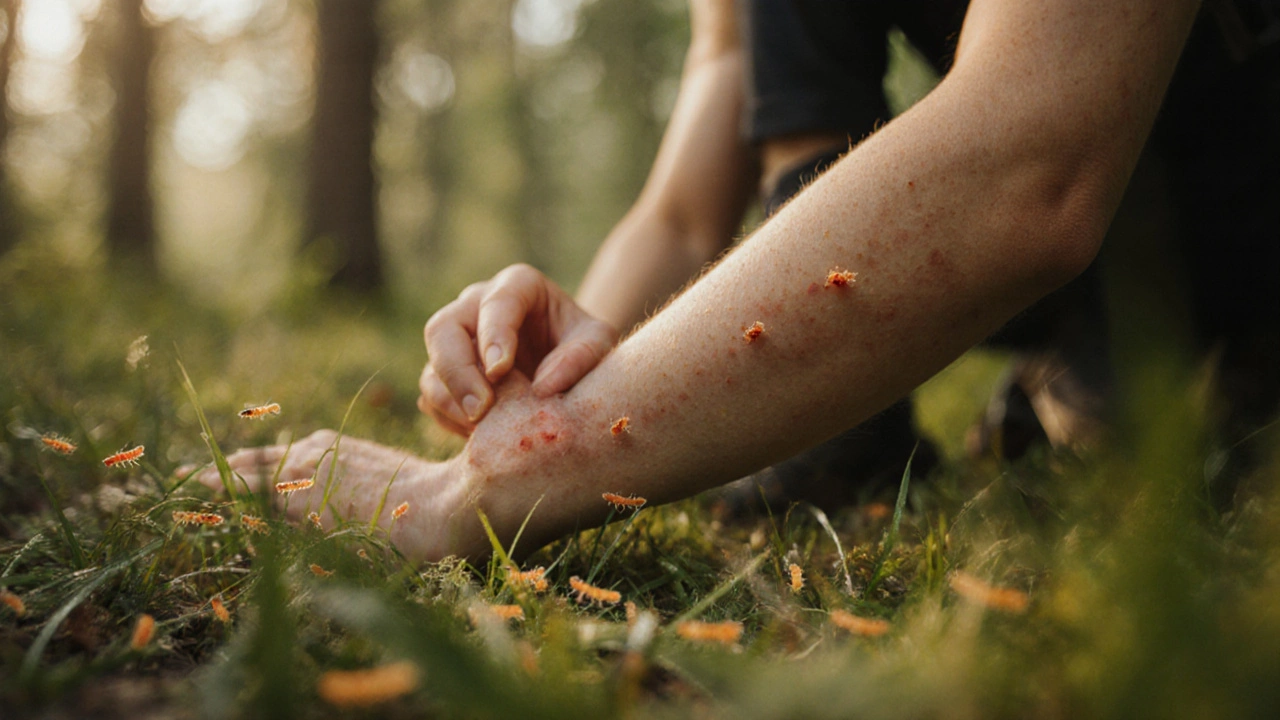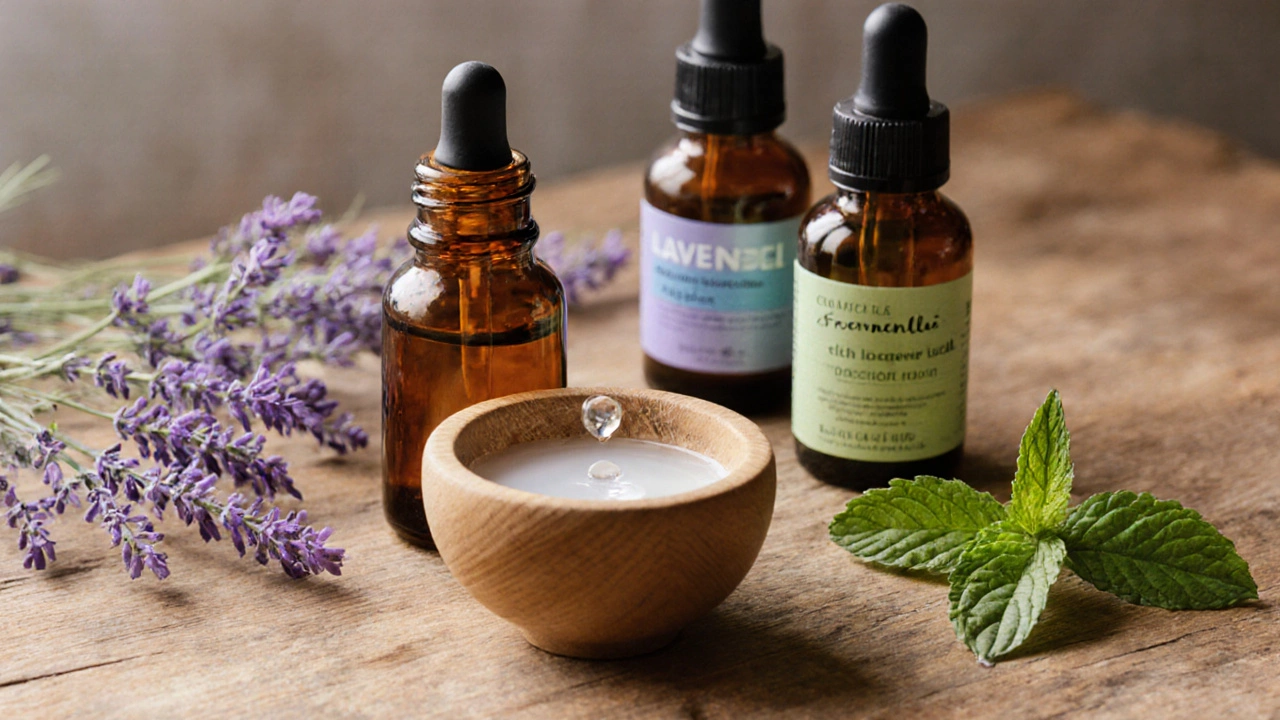
Choose your preferred repellent type to see detailed information about effectiveness, duration, and safety.
Lavender, Citronella, Peppermint
Moderate-High20-30% Concentration
HighClothing Treatment
Very HighEver been hiking in the woods and felt an itch that turns into a rash within minutes? Chances are you’ve encountered chiggers-tiny arachnids that love warm, damp skin. The good news? They have a surprisingly narrow scent tolerance, and you can exploit that to keep them at bay. Below we unpack which smells truly repel chiggers, why those aromas work, and how to apply them safely whether you’re a weekend camper or a backyard gardener.
Chigger is a colloquial term for the larval stage of mites in the family Trombiculidae. These larvae are less than 1mm long, invisible to the naked eye, and thrive in grassy or brushy environments. They latch onto skin, inject digestive enzymes, and cause the infamous red, itchy welts. Unlike ticks, chiggers do not transmit diseases, but the bites can be maddeningly uncomfortable.
Chiggers navigate their world primarily through tactile cues and chemical signals. They are attracted to the scent of sweat, particularly compounds like lactic acid and ammonia. Conversely, strong volatile organic compounds (VOCs) can overwhelm their chemosensory receptors, causing them to retreat. This makes aroma a practical frontline defense.

Research and field reports highlight a handful of aromas that consistently deter chiggers. Below each scent is paired with its active component and a quick safety note.
When using essential oils, always dilute them with a carrier oil (coconut, almond, or jojoba) to avoid skin irritation. A standard recipe is 10drops of essential oil per ounce (30ml) of carrier. Apply the mixture to exposed skin 15minutes before heading outdoors, and reapply every 2‑4hours.
For synthetic repellents, follow label directions. DEET should not exceed 30% for adults, and children under two years should avoid DEET entirely. Permethrin is intended for fabric-spray shirts, socks, and pants, then let them dry before wearing.
| Repellent Type | Active Ingredient | Typical Duration on Skin | Skin Safety Rating | Effectiveness Against Chiggers |
|---|---|---|---|---|
| Natural Oil Blend | Lavender, Citronella, Peppermint (combined) | 2‑4hours | High (when properly diluted) | Moderate‑High* |
| Synthetic DEET | DEET (20‑30%) | 6‑8hours | Medium (possible irritation at higher %) | High |
| Clothing Treatment | Permethrin (0.5%) | Multiple washes (up to 6) | Very High (applied to fabric only) | Very High |
*Effectiveness of natural blends can vary with concentration, environmental humidity, and individual skin chemistry.

For extra bite‑proofing, toss a cotton ball soaked in the mixture into your hat or backpack-its vapor creates a protective cloud.
Essential oils provide moderate to high protection, but they generally wear off faster than DEET. For short hikes (under 4hours) a well‑diluted oil blend is convenient; for longer trips, DEET or permethrin‑treated clothing is more reliable.
Undiluted vinegar can sting, especially on sun‑burned skin. Mix one part apple cider vinegar with three parts water and spray the solution onto clothing or a cloth that you wipe over exposed skin.
Permethrin is safe on fabric for all ages once it dries. It should never be applied directly to skin; instead, treat shirts, socks, and hats before the child puts them on.
Reapply every 2‑4hours, or sooner if you’ve sweated heavily or taken a dip in water. Mark the time on your watch to avoid gaps.
No. Chiggers need direct skin contact to feed, so tightly woven fabrics protect you. Loose, thin fabrics can still allow larvae to crawl underneath.
If you notice bites despite using a repellent, check these common pitfalls:
Adjust your blend, re‑apply, and combine with clothing barriers for a comprehensive shield. With the right scent strategy, you can enjoy the outdoors without the dreaded chigger rash.
Write a comment